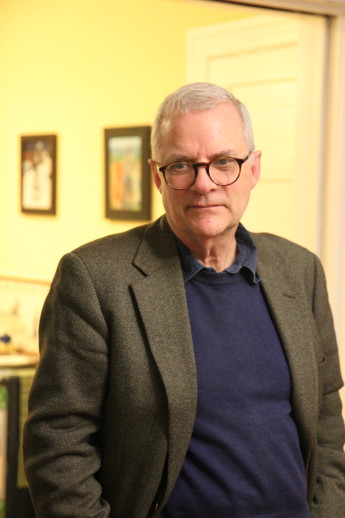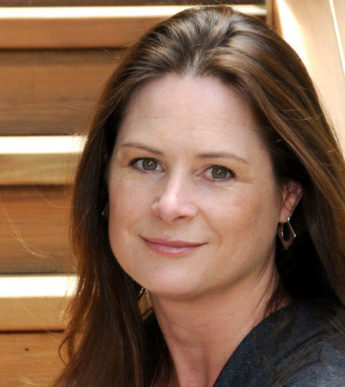Facebook is for oldies. The kids are using SnapChat. After participating in a panel discussion about messaging I thought it was time to check in on this topic again. I should probably be doing this every few months!
Erin Cullerton
Erin is the Founder and Chief Strategist of Design Agency Co. a Los Angeles-based communications firm.

Is online the future for design titles?
At one point I thought it would be when everyone was proclaiming “print is dead.” I think the publishing formulas for traditional media continue to be challenging and, as a result, we will continue to see more print publications go away and more online publications emerge. That said, I think there is a lot of digital and social media fatigue and a desire to turn back the clock a bit on our habits. We all move so fast and information comes at us a million miles a minute, and I believe a commitment to print will always be there as a result of that. We all like to feel like we can slow down and catch up and print represents that in our lives.
Which social media platform do you think works best for design professionals?
At our firm, we’ve always been huge advocates for Instagram because it’s such a visual medium. It best reflects what designers know and do best already. It’s a creative way to expand your communications platform beyond your website. The downside to Instagram today is that it has become inundated with advertising, algorithm issues and influencer overkill. There is serious fatigue on all fronts — both by those posting and by those looking for content. It’s not dead (yet), but I suspect a new platform is on the horizon.
How do firms measure results from social media and/or online publications?
Several of our clients have gotten work through social media, so I would say that is a pretty direct measure of success! Beyond that, it’s all about audience growth and outreach. If you are consistent and good with your engagement, you can capture a lot of attention in that space. Or at least that has been true historically (see notes above about social media fatigue).
As for online publications, the results are often much better than traditional, print publications simply because so many people are reading online. Particularly younger people, so of course you also have to think about the audience you’re trying to capture. But typically speaking, most print publications that also run an online version will get double to triple the readership online. While we still love for our clients to be in print – and they do too – when it’s the right, well-read outlets, they may actually end up getting more exposure and the chance for a story to be picked up multiple times when it appears online. Whereas, the print opportunity while gorgeous and archival in its own way often means fewer readers. But of course, this isn’t an apples-to-apples game. The top publications, like the New York Times, Architectural Digest, and others, will always have strong readership in print (even as they dwindle).
John Parman
John is a Visiting Scholar at the UC Berkeley College of Environmental Design. He cofounded and published the quarterly Design Book Review (1983–1999), as well as many publications for Gensler.

Is online the future for design titles?
It’s clear that they have to be online, and that online is much more than a direct port of print editorial—it’s a medium whose device-dependent variations radically alter the experience and the nature of what can be easily conveyed. And online content often arrives piecemeal, in ways that readers control and filter. We scan magazines and newspapers, but there’s an order to them, by design, that makes us aware of the content in full. Online has some of this, but how it’s encountered and experienced is more random. A lot of content is from others pointing to it. Part of print’s long history is its editorial traditions and standards, and the online side of things is really still at the beginning, constantly dealing with new devices, like VR, that up the ante. The best online publications have at least thought this through and taken a position. By necessity, it’s a temporary one. This leaves aside the question of how to pay for it, also always in flux.
Which social media platform do you think works best for design professionals?
Instagram is probably the safest choice, as it foregrounds the visual and sidesteps politics. Medium and LinkedIn Pulse work well for thought pieces. Both can link to other content embedded in the text. Medium is easier to share to Facebook and Twitter. I think Twitter is useful for design professionals, even if they rarely tweet themselves, simply to follow influential others—journalists, pundits, industry leaders, etc., who will sometimes amplify content by sharing it or commenting on it. Twitter is volatile and should be used carefully. Facebook, also. Both conflate personal and professional, which has to be navigated. Get some advice.
How do firms measure results from social media and/or online publications?
It’s possible to quantify views and time spent viewing, scrolling down, or clicking through. The metrics derive from ad sales and other efforts to generate revenue—Instagram stars with huge followings, for example. Vanity may be a factor, as metrics can become a fetish. For most firms, even the really large ones, anecdotal evidence of impact may be more valuable. When a client retweets your post and it gets 500 additional looks, that matters. When a design writer or critic follows you back, comments on your posts, or welcomes your comments on theirs, that’s good. Finally, if you or your firm is covered in the newspapers of record—the Financial Times, the New York Times, or the Wall Street Journal—that really matters. Increasingly, special interest outlets like Next City that are widely read by critics and journalists in the field also matter. Curbed, with its great coverage of cities like Los Angeles, New York, and San Francisco, is useful for that reason and also closely followed by their respective design communities.
Meghan Dwyer
Meghan is an Assistant Editor at Contract Design magazine.

Is online the future for design titles?
It’s no secret that having a strong digital presence is important to the success of a design publishing brand today — it’s been this way for a while and I think this is only going to become more true as time goes on. With so many design blogs like Dezeen and ArchDaily feeding readers information at such a fast pace, it would be impossible for a magazine to keep up through print alone. But I do think that as a creative industry, we’re in a niche where people see the value in print & being able to hold and flip through something physical. I’m not sure if it will stay this way forever, but I’m a millennial and I still subscribe to the print versions of my favorite magazines and I never use my kindle. I always prefer the physical version.
Which social media platform do you think works best for design professionals?
Instagram all the way. It’s definitely where we get the most traffic as a magazine and it lends itself well to an industry as visual as design. Also, most people have it — so it’s a great way to share new projects and company news as a firm.
How do firms measure results from social media and/or online publications?
I have been recently using Sprout Social which is a really incredible tool for managing social media accounts and pulling analytics & engagement reports. They have great tools for tracking metrics related to audience growth, reach, impressions, and engagement. You can also add competitors and see their most used hashtags, audience growth, and best-performing posts. I’ve tried a few other management platforms and this has been the best by far — though it is also the priciest.
Amanda Walter
Founder of Walter Communications, Amanda is a communications strategist who works exclusively with architects and related design and planning professions.

Is online the future for design titles?
I think the value of online content will continue to increase. I hate to say it, because taking the time to read a magazine cover to cover or even just flipping through the pages full of beautiful images is probably my favorite way to unwind, but I can’t imagine how publishers will be able to justify the expense of a print version. As we turn further and further into our devices for work and pleasure I imagine becomes print a novelty—more likely, an occasional strategy to break through the online noise.
Which social media platform do you think works best for design professionals?
I think there are strong examples of firms and individual designers on almost every social channel, but Instagram is where I see the most engagement and genuine connection happening. Everyone likes to look at pretty pictures, but I am excited by the designers that use Instagram to take us behind the scenes, on their travels and provide a sense of what the world looks like when seen through the eyes of a designer. The ephemeral “Stories” posts are luring designers toward a more playful use of Instagram since they disappear so quickly. Some of my favorite accounts are @Laneylainc, @LakeFlato, @markenglisharchitect
How do firms measure results from social media and/or online publications?
I encourage my clients to rely on the combined analytics from their social channels, their website (Google Analytics) and their e-mail marketing platform (Mailchimp or Constant Contact) to measure against their primary goal for online communications. This goal could be to get people to opt-in to an email list or simply to drive more readers to their website or blog. Running a report of combined analytics will help to determine if posts on social media are performing the way they want, which channel is most effective, or what types of posts their audience responds to. Then if there is a problem area — for example, people are clicking through to read blog posts, but leaving immediately (bounce rate over 40%), maybe the content didn’t live up to the headline or maybe something turns them off about how their site is designed — they can make adjustments and test the new approach in another month or so..